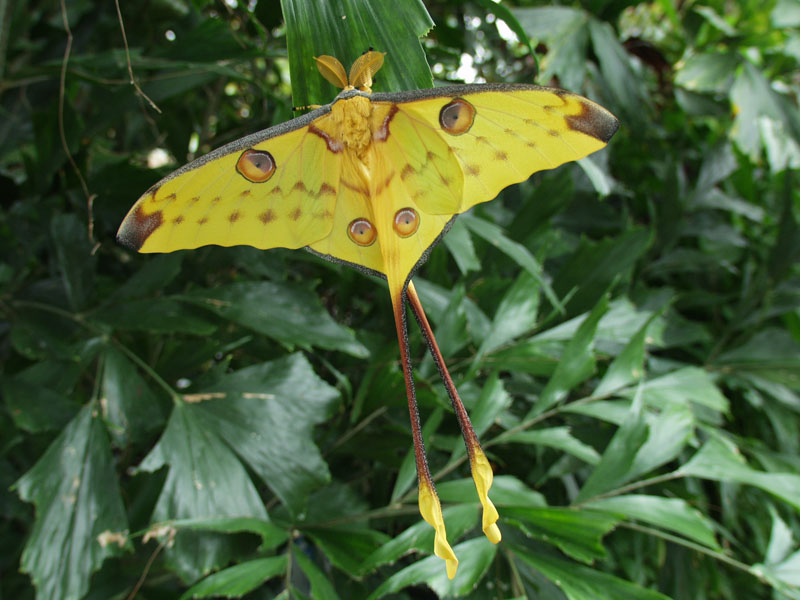

As adults the Madagascar Moon Moths do not have functioning mouth parts, so they will not feed.
The origin of the genus and species is currently unknown.
The Madagascar Moon Moth is found in the rainforest and the surrounding areas.
At night females release a pheromone into the air. Males flying through the air sense the pheromone and follow it back to the female. The female and male, in some cases, can remain copulated until the next night. Each following night the female searches out host plants on which to lay her eggs.
The flight period of the wild Madagascar Moon Moth was not found in the literature at this time.
Madagascar Moon Moths are sexually dimorphic with males being much larger than the females. The female Atlas Moths (Attacus atlas) are considered the largest moth in the world based on surface area but the male Madagascar Moon Moth is considered the longest moth primarily due to its long tails.